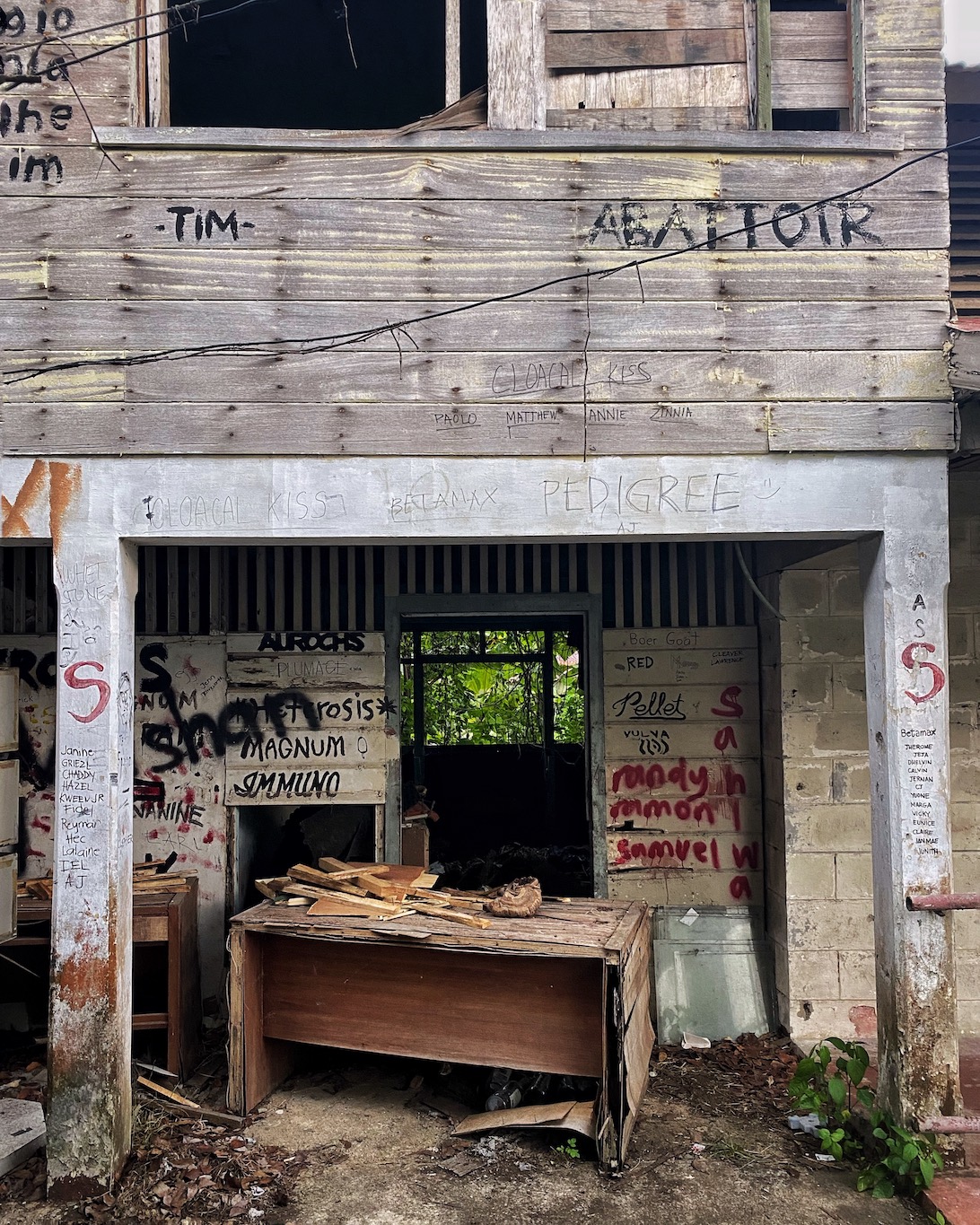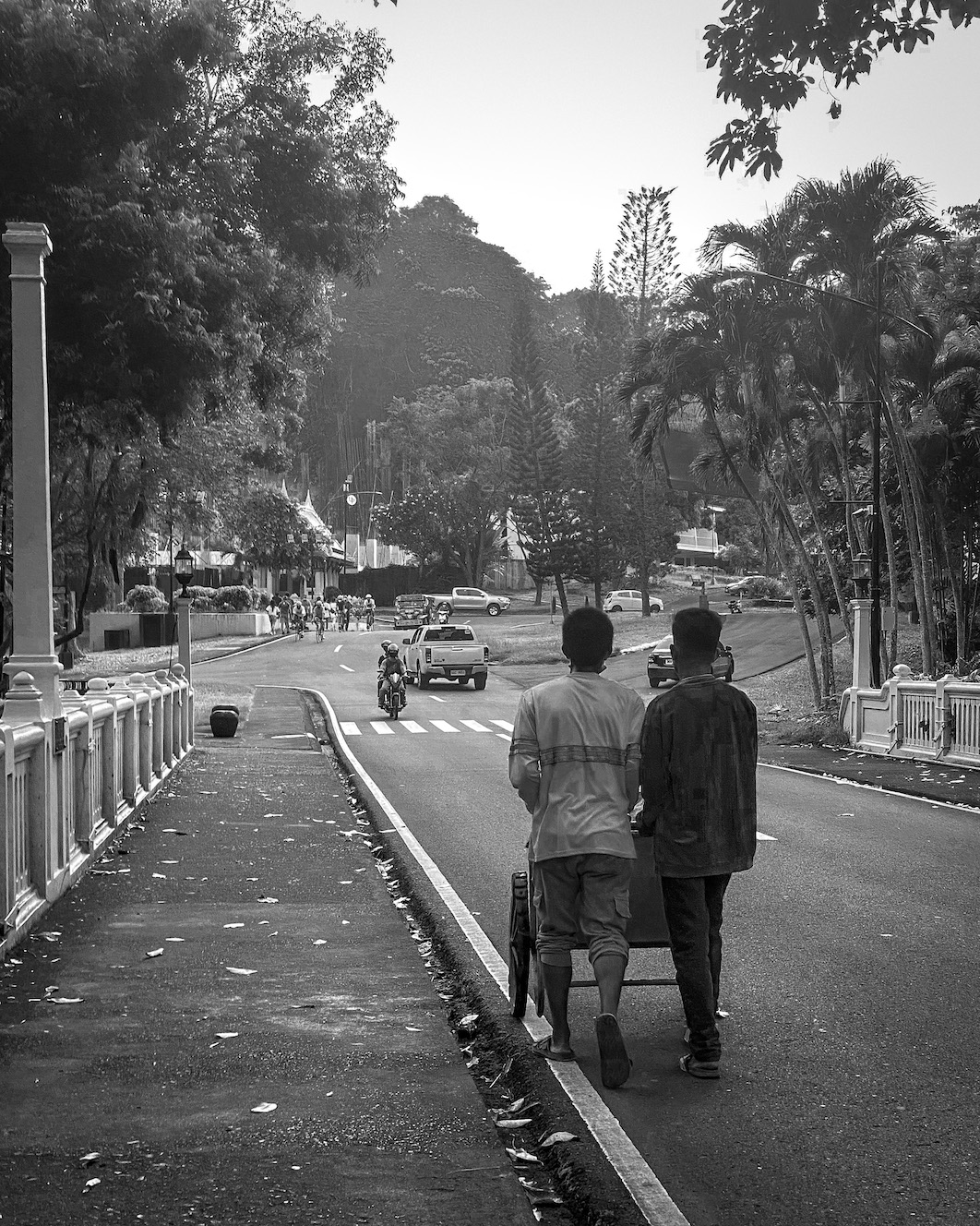
Lea is bound to go home this afternoon, but we first decided to try the bingsu at Seoul Kitchen. The place is small but neat. But one feels that it is trying so hard to become something it isn’t: an authentic Korean restaurant. On the walls, stickers abound, reminding—almost castigating—people to practice social distancing and to keep their noisy little children’s mouths shut. The bingsu is good, although the mangoes are too sour for my liking. The kimbap is not bad.
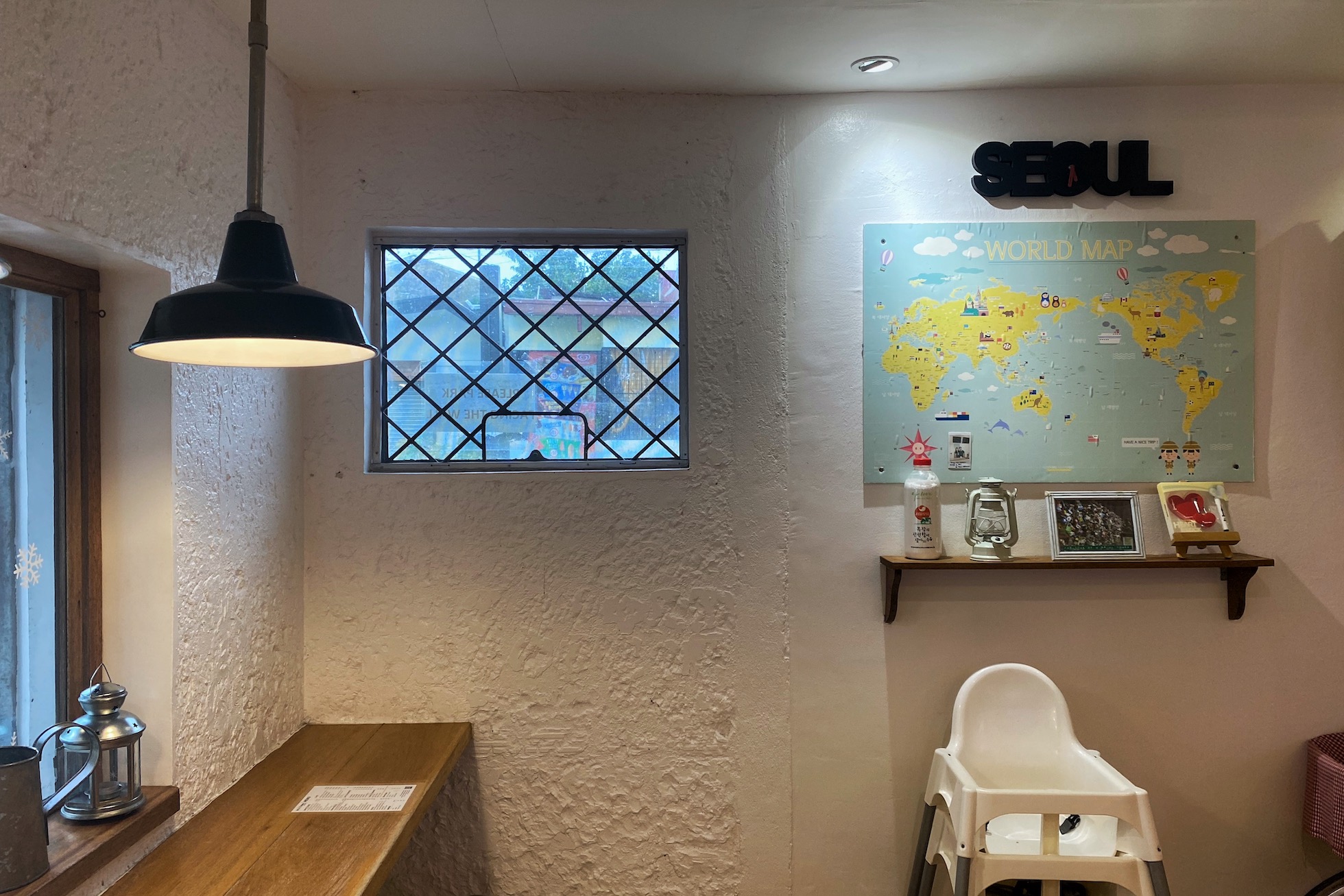
After seeing Lea ride the jeep home, I walk towards the campus. At the bridge on Royal Palm Ave., two young construction workers were pushing a wheelbarrow. One is holding the left handle with his left hand, and the other is holding the right handle with his right hand, pushing their bodies together in an awkward display. They hobbled at the edge of the road like adult conjoined twins. They reminded me of a similar image I took in Baguio a long time ago of two baggers walking with their arms around each other. It was the best display of bromance I have ever seen.
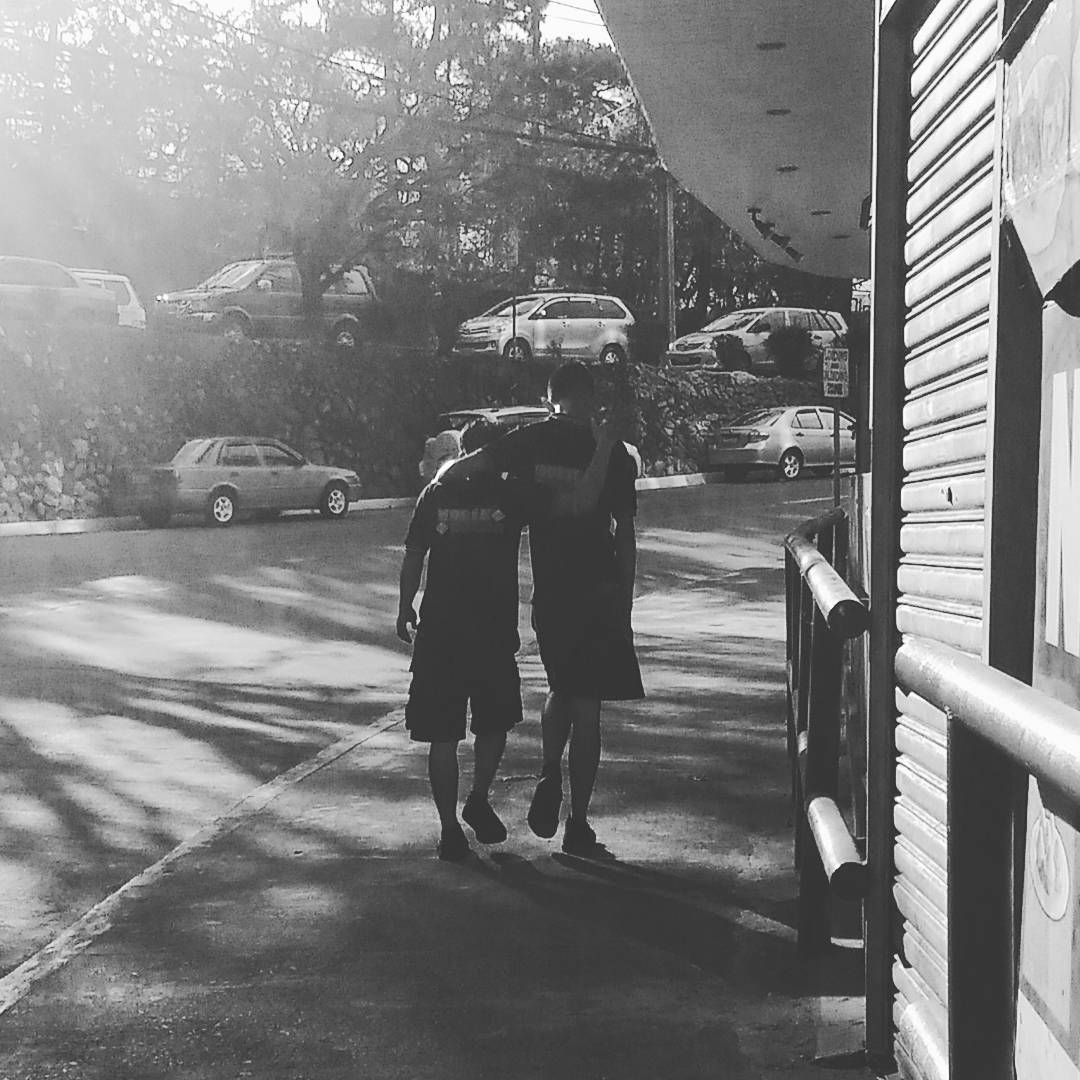
At Freedom Park, I see the lone 7-eleven that closed in 2020. “Temporary store closure,” the sign on its door says. But it hasn’t opened even after stores inside and outside the campus have. It is a reminder of what the pandemic has done. Meanwhile, around the park, a crowd of unmasked joggers, walkers, and picnickers remind me of what life was before the pandemic and what it could be in the months ahead.
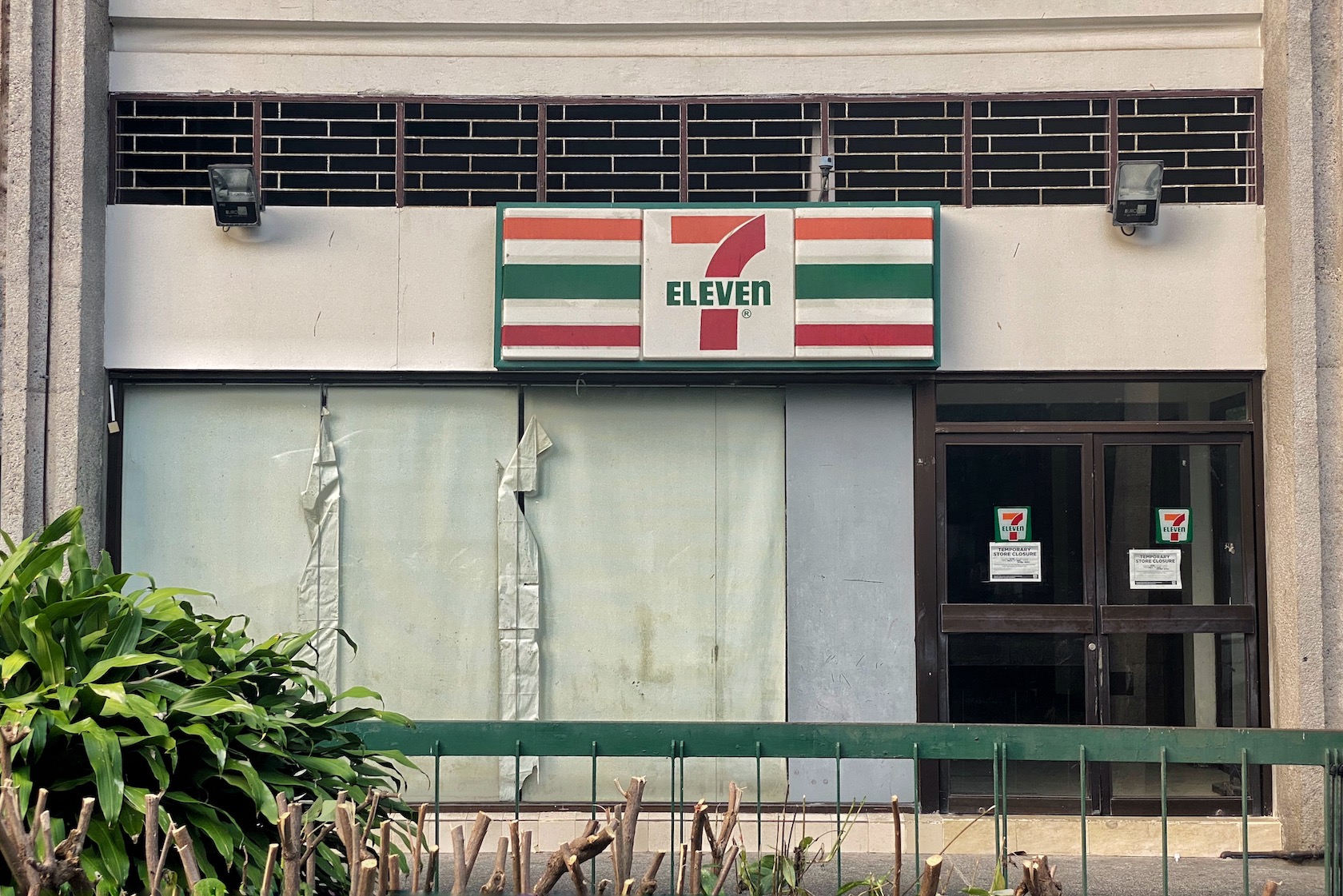
Further up the park, I see the marker for the internment camp. I’ve seen it in the past but didn’t care much until I read the accounts of what happened inside that place. The marker sits beside Baker Hall, which is weird because Baker Hall was never part of the camp. The choice of its location was perhaps pragmatic. Let’s put it away from the park itself, away from the grasses where picnickers now sit and football players kick ball, away from where a skull may once have rolled and where grass once turned crimson.
Near the animal science buildings, I see this old tower-like structure that looks like a long chimney. I walk toward it and take some photos from below. The tower is part of a network of buildings that look older than others on the campus, and with face-to-face classes still not fully back, they look more aged and abandoned. I follow the path that cleaved between the buildings, leading me to a heavily graffitied two-story structure that reminded me of stables in cowboy films. The second floor looks like a large conference hall, while the first floor comprises smaller rooms that were, perhaps, previously offices. I study the writings from afar, admiring this piece of public art. Suddenly, a guard appears out of nowhere and starts walking toward me. I look back at the graffitis and take one last photo, pretending not to care. Then I started walking back to where I came from, at a pace faster than usual, doing what any graffiti artist would do.
